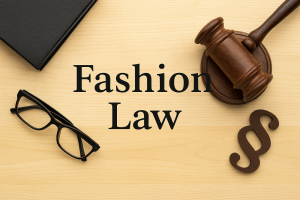However, this affordable solution could see owners breaching intellectual property (IP) rights without realising, leaving rights holders with the difficult task of finding infringers and taking action against them. So, what legal issues has 3D printing brought to the forefront, what can and cannot be printed and what are the ethical considerations of 3D printing? Daniel Kelly, intellectual property solicitor at law firm, Shakespeare Martineau, explains for Lawyer Monthly.
3D printing begins with a computer-aided design (CAD) file which is exported to a 3D printer using specialised software, transforming the digital model into a physical object, making it easy to reproduce products. The fact that CAD files are digital means that they can easily be shared across the internet through torrent sites or other filesharing platforms.
This makes 3D printing difficult to manage. While the process of printing for purely private non-commercial use is not considered to be an infringement of some IP rights, including patents, designs and trade marks, it is inevitably one less sale for an intellectual property owner. However, in cases of infringement, due to the manufacturer often being the end user of the product, it is difficult to prove infringement or even become aware of violation.
There are a number of intellectual property rights which concern 3D printing. Firstly, design protects the appearance of a product and can be both registered and unregistered. Copyright may protect various elements of the 3D printing process, including the code of the CAD file, the design contained within the file, and the physical object to be printed. Trade mark refers to any unique device that distinguishes a product from others, which could be a word, phrase or symbol on the 3D printed item, or even the shape of the item itself. Lastly, patents provide protection over new inventions, which can include a product, safeguarding the owner’s product against those who try to use it without permission.
In terms of defending against IP infringements, rights holders can take several steps to ensure that they are protecting their IP and hopefully limit the opportunities for an infringement to take place. As the main issue with CAD designs is the ease in which they can be shared, it is important for owners to stay in control of where the files are distributed. Being mindful of where files are shared can prevent them from ending up in the wrong hands. Furthermore, placing password protections and unique identifiers on files can further prevent instances of wrongful use.
It is also advisable that rights holders keep a close eye on the market. Large companies often employ brand protection teams; however, smaller businesses may need to protect their brand themselves. To control the market, rights owners may also decide to sell their CAD files with the partnering legal documents and the commercial terms of use - not only does this provide an additional revenue stream and enable increased control over the use of the information, it also ensures that buyers are receiving the best quality product.
In some cases, these preventative steps will unfortunately not be enough to stop infringers and action will need to be taken. In cases where the rights owner is aware of an infringer, the first step is usually to file a cease and desist letter. This is usually sent to the party using the IP right without consent and requests them to stop from making and selling the product.
If an IP rights holder can prove that another party has sold a product without the IP owner’s permission, and so the rights holder has suffered a loss, it may be possible for the courts to award damages. Therefore, it is advisable for rights holders to register their products and/or IP in order to make any necessary enforcement easier.
However, there may be scenarios where sellers continue to distribute products despite actions being taken. In such cases, several remedies are available. The rights holder may seek damages from the infringing party if they can show loss. The IP rights holder may also apply for an interim injunction from the court which prohibits the infringing party from any further use ahead of a court trial. In order to obtain an injunction, the rights holder must show that there is a serious issue to be tried and that it should be ordered “on the balance of convenience”, for example by showing that the injustice could not be remedied through damages alone. Such an injunction may also be taken against an internet service provider, requiring them to block access to a website providing infringing content (such as infringing CAD files), in the same way that rights holders require that websites offering unauthorised downloads of films and music do so.
However, the scenario becomes more complex when it relates to an existing CAD design of a product or item. For instance, it is not uncommon to come across items online that have been designed or copied from items that are protected by copyright. For hobbyists, it is necessary to employ common sense when copying and printing an item that someone has already created. Furthermore, it is also advisable to check for registered rights and terms of use on CAD files before printing, particularly where the products are made for a commercial purpose.
While many view 3D models as an opportunity to foster innovation, it is becoming increasingly important to ensure that the items being printed meet regulatory standards. Items produced by rights holders are usually heavily controlled, having been put through rigorous testing to ensure that they are safe for consumers. As the numbers of counterfeit items continue to grow, it is likely that this will become a bigger problem, with the products produced by hobbyists often failing to meet the necessary legal standards.
At this stage it is difficult to predict how far 3D printing will affect the manufacturing sector, however it is important for rights owners to view 3D printing as an opportunity, as opposed to a threat. By protecting IP rights and being aware of the market, rights holders have the chance to discover new revenue streams while promoting the future of 3D printing.



















